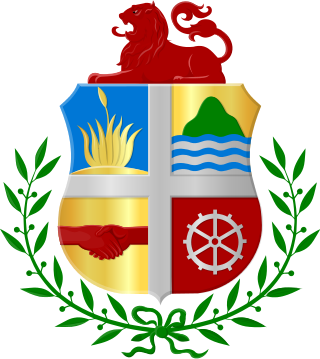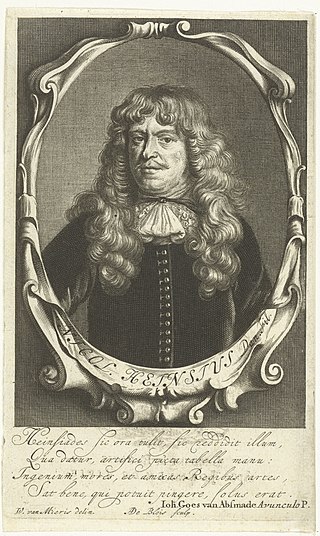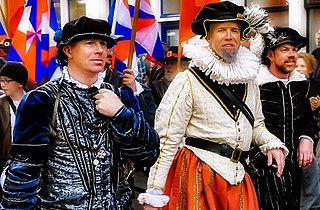
The House of Orange-Nassau is the current reigning house of the Netherlands. A branch of the European House of Nassau, the house has played a central role in the politics and government of the Netherlands and elsewhere in Europe, particularly since William the Silent organised the Dutch Revolt against Spanish rule, which after the Eighty Years' War (1568–1648) led to an independent Dutch state. William III of Orange led the resistance of the Netherlands and Europe to Louis XIV of France, and orchestrated the Glorious Revolution in England that established parliamentary rule. Similarly, Queen Wilhelmina of the Netherlands was instrumental in the Dutch resistance during World War II.

William II was sovereign Prince of Orange and Stadtholder of Holland, Zeeland, Utrecht, Guelders, Overijssel and Groningen in the United Provinces of the Netherlands from 14 March 1647 until his death three years later. His only child, William III, reigned as King of England, Ireland, and Scotland.

The Coat of arms of Aruba has been officially in use since November 15, 1955, as the recognized national symbol of Aruba.

An officer of arms is a person appointed by a sovereign or state with authority to perform one or more of the following functions:

The House of Egmond or Egmont is named after the Dutch town of Egmond, province of North Holland, and played an important role in the Netherlands during the Middle Ages and the Early modern period. The main lines Egmond-Geldern, Egmond-Gavere and Egmond-Buren-Leerdam had high noble, princely rank.

The Royal Library of the Netherlands is the national library of the Netherlands, based in The Hague, founded in 1798.

A roll of arms is a collection of coats of arms, usually consisting of rows of painted pictures of shields, each shield accompanied by the name of the person bearing the arms.

Nicolaas Heinsius the Elder was a Dutch classical scholar, poet and diplomat. He travelled all over Europe to visit the major libraries and over time collected Europe's largest private library in the field of classical literature. He is regarded as a brilliant text critic in his critical publications of Claudian, Ovid, Vergil, Prudentius, Velleius and Valerius Flaccus.

Abbenbroek is a village in the Dutch province of South Holland. It is a part of the municipality of Nissewaard, and lies about 6 km west of Spijkenisse.

Hensbroek is a village in the Dutch province of North Holland. It is a part of the municipality of Koggenland, and lies about 4 km east of Heerhugowaard.

The Gruuthuse manuscript is a medieval compilation, the oldest core of which is dated about 1395, while the youngest unfinished contributions date from around 1408. The manuscript is the only known source for a large number of Middle Dutch texts.

The van Amstel family was an influential dynasty in the medieval Netherlands from the twelfth until the fourteenth century. The family developed the Amstelland and held the stewardship in the ecclesiastical districts in the northwest of the Nedersticht of Utrecht, first in the name of the bishop of Utrecht and later the count of Holland.

The Gelre Armorial is a medieval armorial.

William was Duke of Guelders, as William I, from 1377 and Duke of Jülich, as William III, from 1393. William was known for his military activities, participating in the Prussian crusade five times and battling with neighbors in France and Brabant throughout his rule. His allies included Holy Roman Emperors, Charles IV and Wenceslaus, Richard II of England, and Conrad Zöllner von Rothenstein, the Grand Master of the Teutonic Knights. During his reign the duchies of Guelders and Jülich were temporarily unified.

The Van Renesse family is an old Dutch noble family and cadet branch of the Van Voorne Family that stems from the town of Renesse in Zeeland.

Lenaert Jansz de Graeff, also Lena(e)rt Jansz Graeff, Leendert de Graeff and Leonhard de Graeff belonged to the powerful Amsterdam patriciate. He was one of the leaders of the Protestant Reformation in Amsterdam, a friend of Henry, Count of Bréderode, the "Grote Geus", and his deputy as vice-general-captain of Amsterdam, and according to a family tradition identified with "Monseigneur de Graeff", a privateer and captain of the Sea Beggars during the Capture of Brielle. In recent research, Lenaert Jansz de Graeff is described as one of the leaders of the Sea Beggars alongside Admiral William II de la Marck, Lord Lumey and Willem Bloys van Treslong. His character was also used in a historical novel about De Grote Geus.

The study of Dutch heraldry focuses on the use of coats of arms and other insignia in the country of the Netherlands. Dutch heraldry is characterised by its simple and rather sober style, and in this sense, is closer to its medieval origins than the elaborate styles which developed in other heraldic traditions.

The Dutch Republic Lion was the badge of the Union of Utrecht, the Republic of the Seven United Netherlands, and a precursor of the current coat of arms of the Kingdom the Netherlands.
Most of the members of the Capetian dynasty bore a version of the arms of France. The arms of France were adopted by the Capetian kings only in the twelfth century. Consequently, the cadet branches that had branched off in earlier periods bore entirely different arms.
This page shows the coats of arms, heraldic achievements, and heraldic flags of the House of Nassau.

![On the left folio it is stated that the book was completed on 23 June 1405: Explicit iste liber per manus beyeren quondam gelre armorum regis de ruris [anno domini milesimo quadringentesimo quinto in profesto sancti Johannis baptiste]. Translation: Here endeth this book by the hand of Bavaria, formerly Guelders, Ruwieren King of Arms [in the year of our Lord one thousand four hundred and five on the day before Saint John the Baptist's Day Wapenboek Beyeren (armorial) - KB79K21 - folios 062v (left) and 063r (right).jpg](http://upload.wikimedia.org/wikipedia/commons/thumb/7/73/Wapenboek_Beyeren_%28armorial%29_-_KB79K21_-_folios_062v_%28left%29_and_063r_%28right%29.jpg/300px-Wapenboek_Beyeren_%28armorial%29_-_KB79K21_-_folios_062v_%28left%29_and_063r_%28right%29.jpg)

















